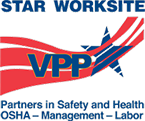 Well, maybe not half the time, but certainly some fraction of the time.
Well, maybe not half the time, but certainly some fraction of the time.
In How to Haul a Victim in Half the Time: Part 1, we covered ways to reduce the time needed to haul a rescue package by taking advantage of changes of direction.
Here, we want to address OSHA and ANSI guidance regarding retrieval systems – specifically mechanical devices used for rescue.
OSHA 1910.146(k)(3) states “To facilitate non-entry rescue, retrieval systems or methods shall be used whenever an authorized entrant enters a permit space, unless the retrieval equipment would increase the overall risk of entry or would not contribute to the rescue of the entrant.
Subsequent revisions to ANSI Z117 included the recommendation that “The mechanical device used should be appropriate for rescue service.” The revised standard adds,“Mechanical lifting devices should have a mechanical advantage of at least four to one and the capacity to lift entrants including any attached tools and equipment.”
 Two key points that must be considered: (1) OSHA follows the ANSI approach that was in effect at the time 1910.146 was promulgated which did not recommend a minimum mechanical advantage ratio; and, (2) The rule makers intended to leave a degree of latitude for the rescue service to select a lifting device that is most appropriate for the particular situation encountered.
Two key points that must be considered: (1) OSHA follows the ANSI approach that was in effect at the time 1910.146 was promulgated which did not recommend a minimum mechanical advantage ratio; and, (2) The rule makers intended to leave a degree of latitude for the rescue service to select a lifting device that is most appropriate for the particular situation encountered.Roco’s rule of thumb is… the mechanical device used should be appropriate for rescue service – and the employer should not use any mechanical device that could injure the entrant during rescue, which would include a mechanical device with too great a mechanical advantage (MA) for the number of people operating the system. Here’s a guideline we use for determining the proper number of rescuers for a particular system – it should take some effort to haul the victim, but not so much effort that it wears the rescuers completely out. And, it should not be too easy, or you won’t as readily feel if the victim gets hung-up.
Because 1910.146 is a performance-based regulation, it does not specify the rescue procedures that are most appropriate for any given PRCS. It leaves this to the responding rescue service based on their assessment of the PRCS in terms of configuration, depth, and anticipated rescue load. Current ANSI Z117 recommends that the MA “should” be at least four to one. Notice that it does not state “shall” and thus the discretion of the rescue service is taken into account. A generic recommendation of a 4:1 is a good start but should not be considered as a catch-all answer to the problem of lifting the load. Even a 4:1 may not be enough if the person doing the hauling is not strong enough and may require a greater M/A in order to remove the load from the space.
Must we always use a minimum MA of 4:1, or could there be justification in using an MA below the 4:1 ratio when there is a need to provide a faster means of hauling the rescue package? Consider the possibility of reducing the mechanical advantage ratio when there is plenty of haul team members. If you have 4 haul team members for a 250 pound rescue package, do you really need that 4:1 MA? Consider going with a 3:1 or even a 2:1, especially if the throw is short and the haul is long. However, keep in mind that the package will be traveling much faster by reducing the MA – so it is imperative that a “hole
watch” be assigned to monitor the rescue package and be ready to call an immediate “STOP” should the package become hung up.
Caution: If you’re using a piggyback system, make sure the haul team does not outpace the individual taking in the mainline slack through a ratchet device. Should a lot of slack build up in the mainline and the haul team lose control of the haul line, the resulting free-fall of the load could spell disaster. Of course we always encourage the use of a safety (belay) line, but on rare occasions the urgency of the rescue may warrant not using a safety line on the victim.
Ultimately it is the employer’s responsibility to evaluate the selected rescue service’s ability to provide prompt and effective rescue. If the rescue service is able to demonstrate their capability using an MA that is less than the current ANSI recommendation, then that would meet the performance-based nature of the standard. In reality, by using a reduced MA, the time required to extricate the rescue package can be cut by 1/3 to 1/2 depending on the situation. In certain emergencies, that saved time could very easily mean the difference between a successful rescue and a body recovery.

 Roco Rescue, Inc. and the Beaumont Emergency Services Training Complex (BEST Complex) have announced a partnership to deliver more options in rescue training for fire departments and industry.
Roco Rescue, Inc. and the Beaumont Emergency Services Training Complex (BEST Complex) have announced a partnership to deliver more options in rescue training for fire departments and industry. Based on the early success of the partnership, both Roco and BEST say they will be adding more dates and courses to the 2012 open-enrollment training schedule. New offerings will include Confined Space, High Angle, Structural Collapse and Trench Rescue. This will provide additional training options for municipal and industrial rescue teams in the area. It’s a win-win-win.
Based on the early success of the partnership, both Roco and BEST say they will be adding more dates and courses to the 2012 open-enrollment training schedule. New offerings will include Confined Space, High Angle, Structural Collapse and Trench Rescue. This will provide additional training options for municipal and industrial rescue teams in the area. It’s a win-win-win. Authorities are investigating the suffocation of two North Carolina workers in a water system manhole—one of whom apparently died trying to rescue the other.
Authorities are investigating the suffocation of two North Carolina workers in a water system manhole—one of whom apparently died trying to rescue the other. Cop receives national award from U.S. Marshals for response to August shooting.
Cop receives national award from U.S. Marshals for response to August shooting. ASTM F1740 provides very comprehensive guidelines for users of rescue rope. The title “Standard Guide for Inspection of Nylon, Polyester, or Nylon/Polyester Blend, or Both Kernmantle Rope” indicates it is specifically intended to guide the user in the inspection of these rescue ropes, and is not intended to be a guide in the selection and use of rescue ropes.
ASTM F1740 provides very comprehensive guidelines for users of rescue rope. The title “Standard Guide for Inspection of Nylon, Polyester, or Nylon/Polyester Blend, or Both Kernmantle Rope” indicates it is specifically intended to guide the user in the inspection of these rescue ropes, and is not intended to be a guide in the selection and use of rescue ropes.


